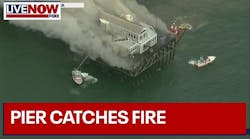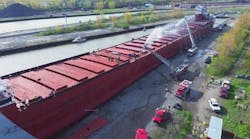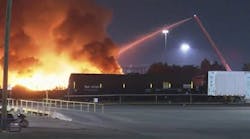In this, the first of a three-part series, I sat down with Bob Andrews, vice president and chief operations officer of community hazard mitigation services at ISO, to discuss newly implemented changes to the Fire Suppression Rating Schedule (FSRS) that impact not only the rural fire service, but suburban and urban fire departments as well.
RFA: Can you provide a big-picture view of what’s happening at ISO and what led to the current revision of the FSRS?
ANDREWS: After all these years, the fact remains that fire is still a leading cause of property loss – and a community’s efforts to mitigate those losses, either before or after an event, are of great importance to the fire service and insurance industry. For 30 years and counting, the information gathered by ISO and the analysis conducted using the FSRS have helped insurers differentiate varying levels of fire protection.
ISO staff proactively sought feedback from folks all over the country as part of the rating system review. I think most will find that ISO has incorporated many of those ideas received from the fire service into the revised rating schedule. The largest change is a shift from a hardware-based schedule to a more performance-based schedule, recognizing that while hardware is an important part of fire mitigation, it won’t get the job done by itself. The fact is people and leadership matter.
RFA: Can you explain some of the major changes in the development of the new FSRS?
ANDREWS: The changes are expressed as differences in classifications through the Public Protection Classification (PPC) program, where Class 1 represents exemplary fire protection and Class 10 indicates unrecognized fire protection. Nationally, the most common classification is Class 6.
The revision to the FSRS focuses on those areas that have a proven impact on fire suppression. This is in addition to aligning FSRS requirements with those of nationally accepted standards. Importantly, it now recognizes a community’s efforts to limit loss prior to an actual fire event.
RFA: What are some detailed changes that fire departments can expect?
ANDREWS: The revised FSRS continues to evaluate three major categories of fire suppression: emergency communications; fire department, including operational considerations; and water supply. In addition, it includes a new Community Risk Reduction section that recognizes community efforts to reduce losses through fire prevention, public fire safety education and fire investigation.
Some of the changes directly affect the minimum facilities that FSRS requires for evaluation. By referencing the National Fire Protection Association (NFPA) 1901 standard, ISO has increased minimum pump capacities needed for apparatus to qualify for minimal recognition under Class 9 and separately for Class 1 through 8B. That change follows more closely NFPA requirements. In addition, ISO has added consideration for firefighter safety, such as personal protective ensemble and increased recognition for driver and operator training, recognizing that fire suppression operations can be carried out successfully only if personnel are able to avoid accidents and injury.
One of the most rapidly changing areas in fire suppression is emergency communications. The revised FSRS incorporates major revisions to that section, with a pronounced shift in emphasis from hardware, such as phone lines and radio equipment, to performance. The element of time is critical in allowing firefighters to attack a fire in the incipient stages, and the revised schedule places greater value on a communication center’s ability to answer and process emergency calls in time frames specified by the NFPA. So rather than reviewing phone books, phone lines, and recording devices, ISO will consider technological capabilities such as enhanced 911, wireless technology, VoIP, CAD and GIS systems.
In the fire department evaluation, ISO recognizes that fire departments are using various methods to solve the critical issues of economic constraints, firefighter recruitment and personnel retention. One way ISO has addressed that is through enhanced recognition for automatic-aid personnel and equipment, including an increase in the automatic-aid factor for fire departments that operate with common fireground procedures.
In addition, credit will now be available for fire departments that develop and use standard operating procedures and incident management systems. ISO will also be able to consider a fire department’s deployment analysis, based on NFPA 1710, as an alternative to ISO’s traditional road-mile distribution study.






